

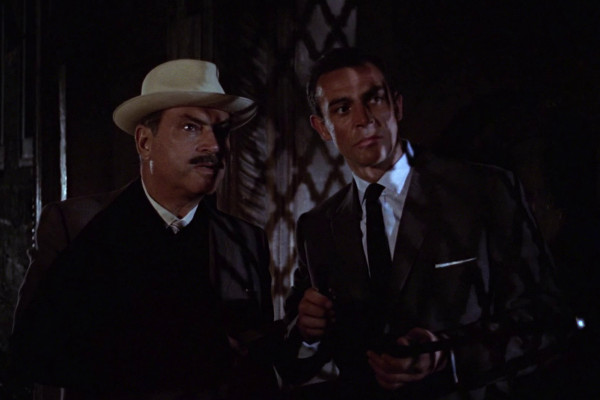
Bond gradually began to latch on to current trends, so much so that by the late '70s it was doing its own take on Star Wars. But in 1963 it was all very different... Bond doesn't chase trends, he gets Matt Munro to do his theme tune, and in Goldfinger he talks about something being as bad "as listening to The Beatles without ear muffs".
The theme tune here is curious because it only exists in an instrumental version for the main titles, and it's not until the end it gets heard fully, so was still yet to become "a thing", in the way it would, post-Goldfinger. The presence of overblown title themes has taken on such cultural cache that their release is an "event" almost as big as the movies themselves, and we have to retroactively pretend that Dr. No was the only film in the series that didn't have one, rather than the clear onscreen fact that it was actually a calypso version of Three Blind Mice.
One intriguing aspect of these earliest Bond films, returned to with Craig to a certain respect, is how naive and green Bond is as a spy. Although Dr. No states that he's been doing it for ten years, he's frequently outsmarted by the opposition and often just scrapes through on luck and tenacity, a much more fallible agent than he would later become. He's also more traditional in his treatment of women, and more gullible with them - this is the first film until Daniel Craig's run where he has a girl that crosses from one movie to the next.
His treatment of women does begin to get rougher here, though, as he slaps one of his four paramours, a gesture that Connery said he had no issues with enacting in real life. It's this animalistic, aggressive side of Connery's nature that make him so convincing as James Bond, but the character also quite repellent.
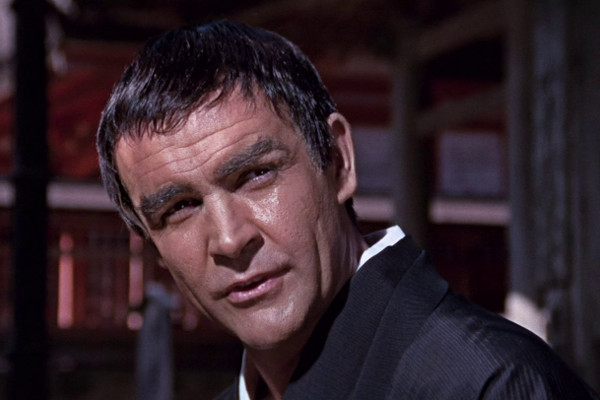
One of the big questions frequently asked about James Bond is whether or not it can exist in, or is "appropriate" for the modern age. All of which seems to be spectacularly missing the point. Whether a film that's over 50 years old - an historical document - can be watched today is of no consequence to its intrinsic value. You're choosing to watch a film that's from the long past, the film hasn't been made to appeal to social conventions of its own future.
What's more, this "un-PC" nature of the films is Bond. It's Bulldog Drummond meets Fu Manchu with exotic locations. That's the deal. Whether or not Sean Connery disguising himself as "a Japanese" in this entry is appropriate or not is not part of the equation - such matters aren't "of their time", they're what you're signing up for as an audience, like it or not. 007 existing in a world of questionable oriental stereotypes or a virtual Blaxploitation movie is the very essence of the character and film series, a fundamental part of its DNA.
It's easy to be embarrassed by it, and try to decry it, especially when an approximation of the films are still being made today, but that is the ultimate essence of Bond. To suggest that such moments are merely lapses in judgement is to watch Carry on up the Khyber and be embarrassed by all the mock-Indian accents. This is not to support such things per se, it simply is what it is, but there is a series of "wrongness" about You Only Live Twice that makes it so perversely wonderful.
There's a richness in the colours and scope, a feast for the eyes, so that even Connery's now-reported hatred of the role can't detract from it. With a screenplay by Roald Dahl, this is Bond in the chocolate factory, where any floor or chair can lead to a secret passageway. Like most Bond films, it does drag in places, and could be improved with 10 or 15 minutes trimmed off the runtime. A film made up of a series of preposterous set pieces and unlikely events, in many ways it's a step too far, but when you've got an ending with an army of ninjas invading an underground volcano hideout with its own piranha tank, you've got everything you could ever need. The truly atrocious matte work/back projection/dubbing only adds to the deeply questionable fun.
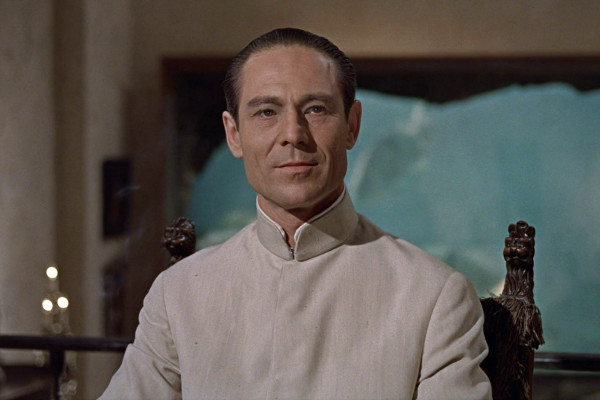
Dr. No has a very "proto-Bond" feel in retrospect, a relatively low-key, straightforward spy plot without the excess gadgets and silliness that very quickly came to define the franchise. What's immediately striking about this is that "Bond, James Bond" gets said almost as mockery to the way he's addressed by a lady first, rather than being a formal greeting of his own. Not only this, but his choice of drink preparation is said matter-of-fact, not a character in a movie knowing he has a catchphrase.
To go back over previous themes explored in this article, then in the modern age diversity is argued for in the presentation of Bond, but it seems to be missing the point. Although we're supposed to like Bond on some level, he appeals to baser instincts, whereby his existence is a post-colonial fantasy, a world where conspiracies are plotted daily and only the British can be trusted, where Bond's enemies aren't so much concrete reality but the metaphysical other.
It's essentially a fairytale for would-be alpha males missing the days of the Empire. Bond isn't simply just "a spy", he's a figurative penis substitute for Brexit voters. Bond is the man who can fight like people want to fight, shag like people want to shag, and can deal with anyone with differing values, all while wearing a union jack. The idea of reconstructing a character in the present age in modern values seems to be missing the fundamental nature of the character, reconfiguring a never-real archetype into something with three dimensions, which is an exercise in futility.
Such actions require the question of whether it's possible, or even valid, to update characters for a new audience. Such things are what they are, and if you develop them past their basic boundaries, how far can you stretch that before they fail to exist as themselves and become something else entirely? Trying to create a version of 007 that's James Bond but without the sexism and throwback racial undertones is like bringing back Dracula, but without making him a vampire, or deciding that Jaws should be rebooted, only "does he have to be a shark?" Ultimately if you're creating films about a character who was invented 70 years ago, but want to strip them of their core values of this time, then perhaps it's best just to leave what is a pretty archaic character in the past.
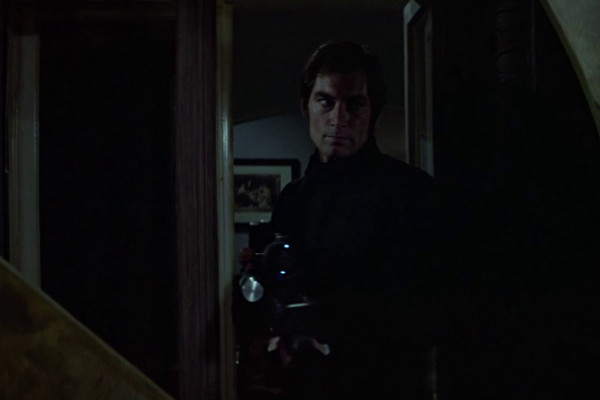
A fascinating project, retooling the James Bond franchise as a serious spy drama with a classically trained actor in the lead role. Timothy Dalton plays against the standard depiction of the character, giving a more realistic depiction of a trained killer who lurks in shadows. Dalton wasn't especially popular with a lot of fans, and in many ways it's a James Bond film for people who don't especially like James Bond films.
As always, the movies are harmed by having a large number of Russian characters without Russian actors in the cast, something which is particularly jarring in a more "realistic" 007 universe like this one. In particular, a jail guard who seems to come from Leningrad via Barnsley comes perilously close to undermining the whole thing. '80s artefacts like the incidental music and a man who kills with the headphones of a Walkman also litter the piece. The customary sexism of the time, which seems embarrassingly crass today, sees Bond strip a woman topless to distract a guard.
It's curious to wonder how Pierce Brosnan would have done in the Dalton films. The lead in four bland and shallow James Bond movies, Brosnan was reputedly cast as Bond in this movie before contractual obligations to TV forced him to pull out. (Cubby Broccoli denied this, and said that Dalton was always first choice out of the two, but then he'd have to, wouldn't he?) While it's tempting to think Brosnan would have done better in a more serious Bond, there's enough quips and arch humour - played against the lines by Dalton - that could have easily turned into the typical smug mush under a less serious actor. There's definitely not a total embargo on the silliness that had engulfed the series, with Aston Martin gadgets and a snowhill escape in a cello case the kind of things the Bonds either side of Dalton would have had a field day with.
Like the majority of Bond movies, The Living Daylights does begin to outstay its welcome, particularly in a climax that begins to descend into noise and bullets. But as an experiment into a more realistic depiction of the core concept, it succeeds admirably. Of course, with a film series that has a wildly differing style and focus, it's easy to appear to contradict yourself, particularly if you've written down thoughts on these films in sequence, but then ranked them afterwards. So, yes, while the core concept of Bond is dated by its very nature, this Dalton vehicle, and the Craig movies (which exist outside of the main Bond continuity anyway) do manage to retool the character to a large degree. All of which contradicts a lot of what was said under the previous entry, but then this is a franchise without serious internal consistency.
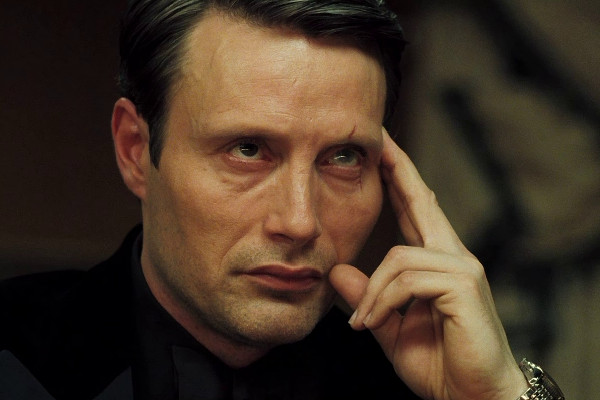
If this was a ranking based purely on production values, then the Daniel Craig movies would obviously top this list. They've had money thrown at them, and, even inflation-adjusted, they're still among the most lucrative Bond movies, joined by most of Sean's and some of Roger's. But in this regard then it's an unfair comparison, as the Craig movies are still of the current age, and so haven't had time to become cultural artefacts.
The Brosnan movies were slick products at the time, no matter how shallow the content, but have aged arguably far worse than any other era due to the CGI, which looks horrifically cheap now, but (mostly) didn't then. Not that cheap CGI has gone away by Craig's time - the fight on the cranes at the start of this one has some truly shocking moments, and even in this age, stunt doubles don't work on BluRay - but they haven't had a chance to become "of their time" like the rest of Bond has. Maybe in years to come, the Mad Men-style opening title sequence (which actually predated Mad Men) will look quaint and laughable, but just fifteen years on it still stands up, and it's a relief to get a title sequence without nipples in it.
There are also stylistic directorial touches, such as Bond getting a closer view on something by dramatic jump cuts... it might look cool today, but who's to say in ten year's time it won't look as quaint and antiquated as zooming in does now? Who's to say that all the colour filters used throughout the Craig era won't look incredibly retro if we see them in 20 years' time?
But, of course, production is far from everything. You need content, which is just as much important, if not far more so, than the look of the thing. Written, amazingly, by the duo behind Die Another Day and the woeful Johnny English films, a lot of the credit must be assumed to go to Paul Haggis as a third writer for this venture. Directed by the man behind GoldenEye, it's an unpromising mixture that manages to far exceed the previous form of the makers, even if their DNA can still be gleaned throughout many of the dumber moments.
A lot of the credit for this one must be given to Daniel Craig, who brings something new to the part. It's a far more committed, "straight" take than ever seen before, but the real selling point is, of course, that he really does look like a man who would beat the living crap out of you. Connery had the aura, but time has shown that he clearly did hardly any of this own stunts.
There is a certain "dumbing down" of events, even for Bond, with the Baccarat game of the 1953 novel replaced by Texas Hold 'Em poker. A great game, for sure, though the film relies on the premise that a man who plays poker for 10 million a game would have so obvious a "tell" he's practically sat there doing a Norman Wisdom cry of "Mr. Grimsdale!" every time he's bluffing.
But for any less believable moments, and a plot that sees Bond's lover plot to drown herself for him, the whole thing is held together by Daniel Craig's utterly confident, recharged take on the character. Playing against many of the lines, he successfully redefines the character, and, even if his era never quite lived up to the promise shown in this first outing, he showed that the series did still have fresh life in it.
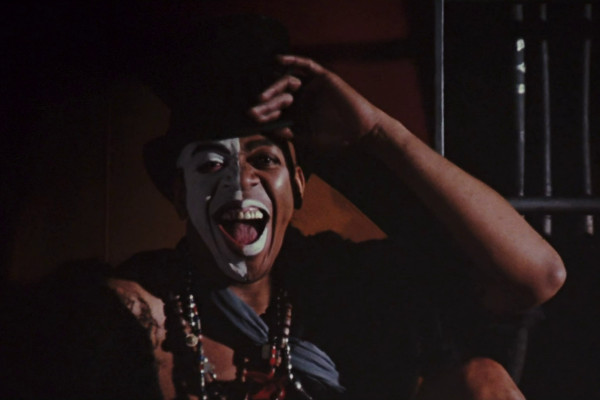
Two hours of blissful, glorious inappropriateness, with Bond on the streets of Harlem and in the Caribbean. Naturally, the Caribbean, even though Ian Fleming lived there, has to house its own witch doctors and voodoo cult. As with You Only Live Twice, this is Bond embracing the fundamental inappropriateness of its own nature, rather than such things being merely symptomatic of the time it was made.
Roger Moore is definitely an acquired taste as Bond, and the joke wears thin before the decreasing quality of his films run out. Some will see it as diluting the character of 007, whereas other will enjoy the meta deconstruction of what is, after all, a very silly character. As Moore himself said on numerous occasions, it's very hard to take the adventures of a secret agent seriously when everyone in the world knows his name. Whatever your feelings on Moore, it's hard to imagine any Bond being as funny in Harlem as his never-more-English take on the role.
It's not perfect. Sometimes the editing is sloppy (witness Tee Hee's fake "arm" nearly falling off in the train fight, left in before cutting to a shot with his arm in a completely different angle) and there's a cheap, "setty" feel to all the interiors, something not felt with previous Bonds that can feel more genuinely expansive. It could just be that director Guy Hamilton opts for tighter shots throughout a lot of the runtime, giving no real sense of space. There's also, with "holy shit!", "son of a bitch", "ass" and "crap" the first swearwords in Bond, allusions and the occasional "bloody" not withstanding.
But even things like a silly dummy with bulging eyes work, and work well, because of Moore's very meta take on the character. This isn't a Bond that demands you suspend your disbelief, it's a Bond that knows it's ridiculous and is in on the gag. Yet such a reading of what Moore is doing is also perhaps giving him too much credit - Moore himself admitted to not getting the hang of the character until The Spy Who Loved Me, so his more awkward, "fish out of water" take in his first two films is more than just pure irony.
Colourful and full of some of the most memorable henchmen in the whole series and a striking main villain in Yapphet Kotto. It's just a little cruel that they gave the villain with the fattest tongue an assistant called "Solitaire".
Like most James Bond films, you could chop out at least 10-15 minutes and make a better movie (and if you're seen it, you're probably aware of exactly which 10-15 minutes) but there's still a certain sense of style among it all. Along with having arguably the greatest theme song of them all, this is great entertainment.